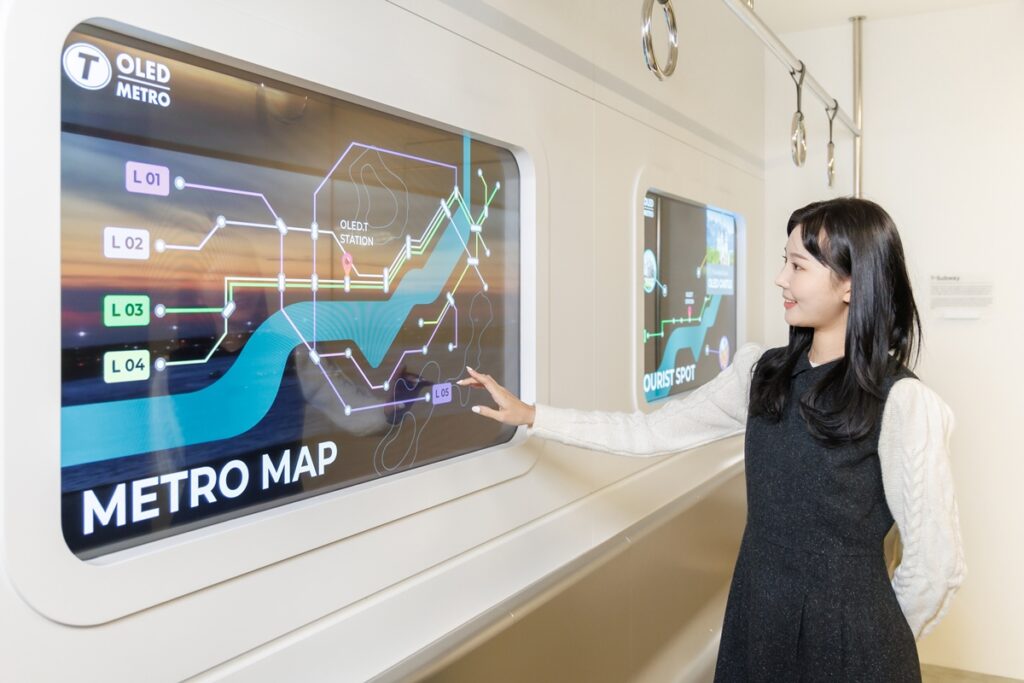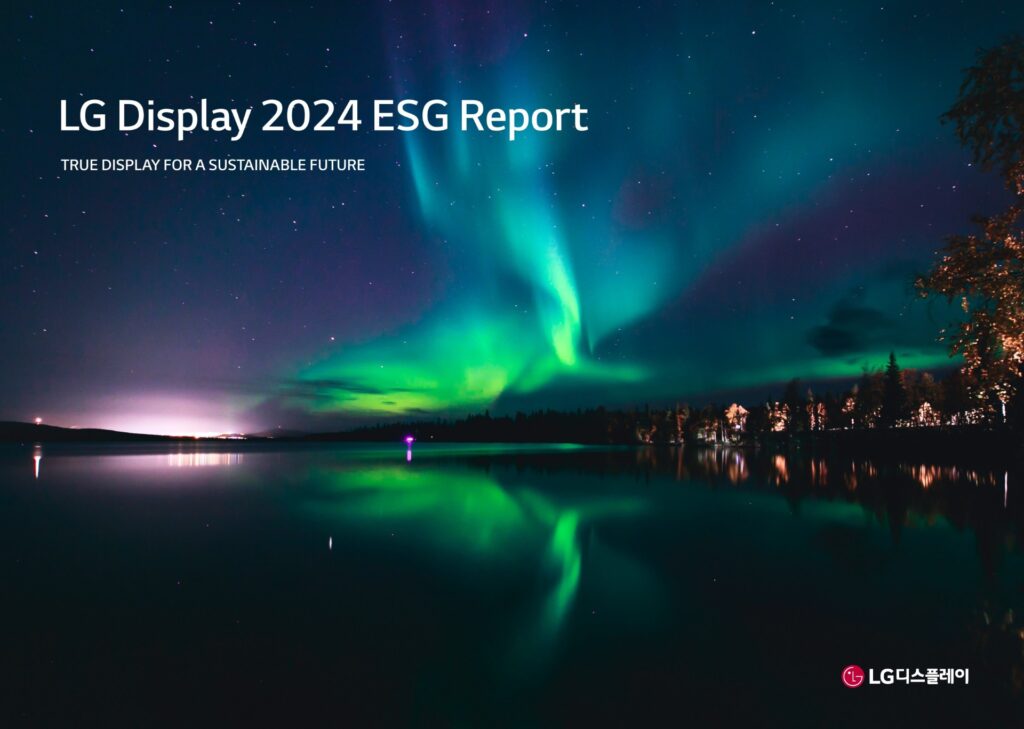SEOUL, Korea (July. 25, 2017) – LG Display reported today unaudited earnings results based on consolidated K-IFRS (International Financial Reporting Standards) for the three-month period ending June 30, 2017.
◆ Revenues in the second quarter of 2017 increased by 13% to KRW 6,629 billion from KRW 5,855 billion in the second quarter of 2016 and decreased by 6% from KRW 7,062 billion in the first quarter of 2017.
◆ Operating profit in the second quarter of 2017 recorded KRW 804 billion, a year-on-year increase of 1,712% from the operating profit of KRW 44 billion in the second quarter of 2016 and a quarter-on-quarter decrease of 22% from the operating profit of KRW 1,027 billion in the first quarter of 2017.
◆ EBITDA in the second quarter of 2017 was KRW 1,583 billion, compared with EBITDA of KRW 833 billion in the second quarter of 2016 and with EBITDA of KRW 1,743 billion in the first quarter of 2017.
◆ Net income in the second quarter of 2017 increased 8% to KRW 737 billion, compared with net income of KRW 679 billion in the first quarter of 2017, and a year-on-year turnaround from a net loss of KRW 84 billion in the second quarter of 2016.
LG Display recorded its 21st straight quarterly operating profit of KRW 804 billion despite the drastic decline in the exchange rate and the year’s off-season, which caused reduced shipments of mid- and small-size panels. The achievement was backed by the company’s differentiated technologies and its focus on profitability based on the product mix for large-size Ultra HD TV panels and high-end IT panels.
The company also registered KRW 6,629 billion in revenues in the second quarter of 2017, a year-on-year increase of 13% from KRW 5,855 billion. Panels for TVs accounted for 46% of the revenues in the second quarter of 2017, mobile devices for 22%, desktop monitors for 17%, and tablets and notebook PCs for 15%.
With 82% in its liability-to-equity ratio, 147% in its current ratio, and 17% in its net debt-to-equity ratio as of June 30, 2017, the financial structure of the company remains stable.
Along with the earnings results of the Q2 2017, LG Display announced its investment plan for OLED, which was decided in a board of directors’ meeting held on the 25th. The company decided to make an up-front investment of KRW 2.8 trillion in a 10.5th generation (2,940mm X 3,370mm) large-size OLED production line at its P10 plant in Paju, Korea, where LG Display’s display cluster is located. The company will also invest KRW 5 trillion in a new 6th generation (1,500mm X 1,850mm) plastic OLED (POLED) production line in Paju. Adding these new investments of KRW 7.8 trillion onto its on-going investment in OLED, LG Display will invest a total of KRW 15 trillion into OLED production lines through 2020, thereby making its Paju display cluster the company’s hub of OLED production.
LG Display’s decision on these large-scale investments came at a time when the company’s newly-launched large-size OLED panels for TVs such as Wallpaper OLED and Crystal Sound OLED (CSO) are earning popularity in global markets. Moreover, as the customer base for OLED TVs and signage displays is expanding, alongside rapidly increasing OLED demand from the mobile and automotive markets, LG Display made its decision in a timely manner to actively respond to changing and growing markets.
In particular, LG Display’s decision to make an up-front investment in the 10.5th generation OLED production line prepares for the next-generation technology innovations in the fast-expanding large-size OLED market. The company’s 10.5th generation OLED production line will be the world’s first trial of this kind of facility; current 10.5th generation LCD production lines are mainly invested in by Chinese players.
The size of mother glass produced in 10.5th generation production lines is 1.8 times larger than that in 8th generation production lines, and the industrial standardization of extra-large size displays has not yet been set. Therefore, LG Display is moving prudently on its new OLED production line. It will only begin mass production of OLED TVs after stabilizing the technology for producing extra-large size panels and oxide backplanes for the mother glass.
In addition, in order to respond to the fast-growing OLED TV demand in global markets, LG Display will invest in a new 8.5th generation (2,200mm X 2,500mm) large-size OLED production line in Guangzhou, China, where the company is already running an LCD panel production plant. To this end, the company decided to establish a joint venture with total capital of KRW 2.6 trillion and will take a 70 percent share, worth KRW 1.8 trillion, in the joint venture.
LG Display’s LCD panel production plant in Guangzhou, which started mass production in 2014, has already secured high production efficiency and cost competitiveness as its 8th generation LCD production center. As Guangzhou is an advantageous location in China, the largest TV market in the world, the company is well placed to respond to fast-growing OLED TV demand by leveraging the Guangzhou cluster and to rapidly secure productivity for qualified products.
Thanks to its investment in plastic OLED (POLED), LG Display will attain an additional production capacity of 30,000 input sheets per month, expanding its capacity to 65,000 input sheets per month based on the 6th generation lines in Paju and Gumi, a city in the southern part of Korea. This capacity is enough to produce 120 million 6-inch smartphone displays per year. Based on this increased capacity, LG Display will expand its leading position in newly-growing markets such as auto displays as well as smartphones by unveiling various forms of flexible display products.
With the smartphone display market continually shifting toward POLED, the POLED market size for smartphones is expected by the industry to be 120 million units in 2017, rapidly increasing to 370 million units in 2020. Additionally, the flexible OLED market will also show CAGR of 63.2%, reaching 389 million units in 2020.
“We’re clearly seeing the possibilities the OLED business offers, not only in the global TV segment, but also in the smartphone and automotive markets,” said Dr. Sang-Beom Han, CEO and Vice Chairman of LG Display. “We plan to actively respond to customers’ demands by expanding OLED capacity in a timely manner and developing diversified flexible displays that are fit for various applications.”









